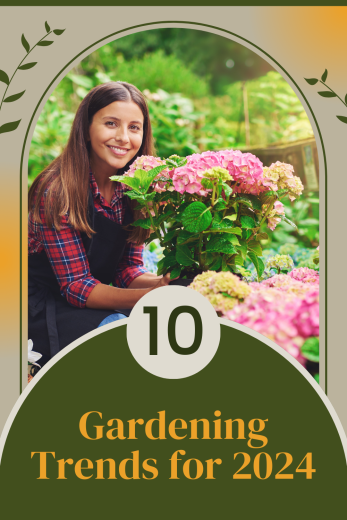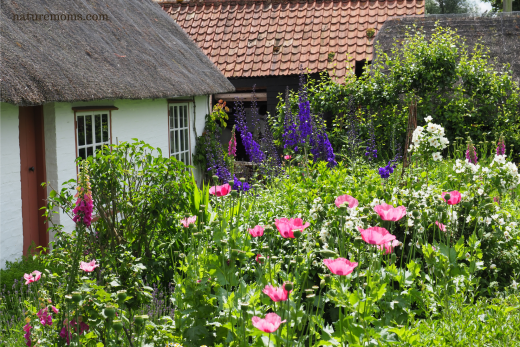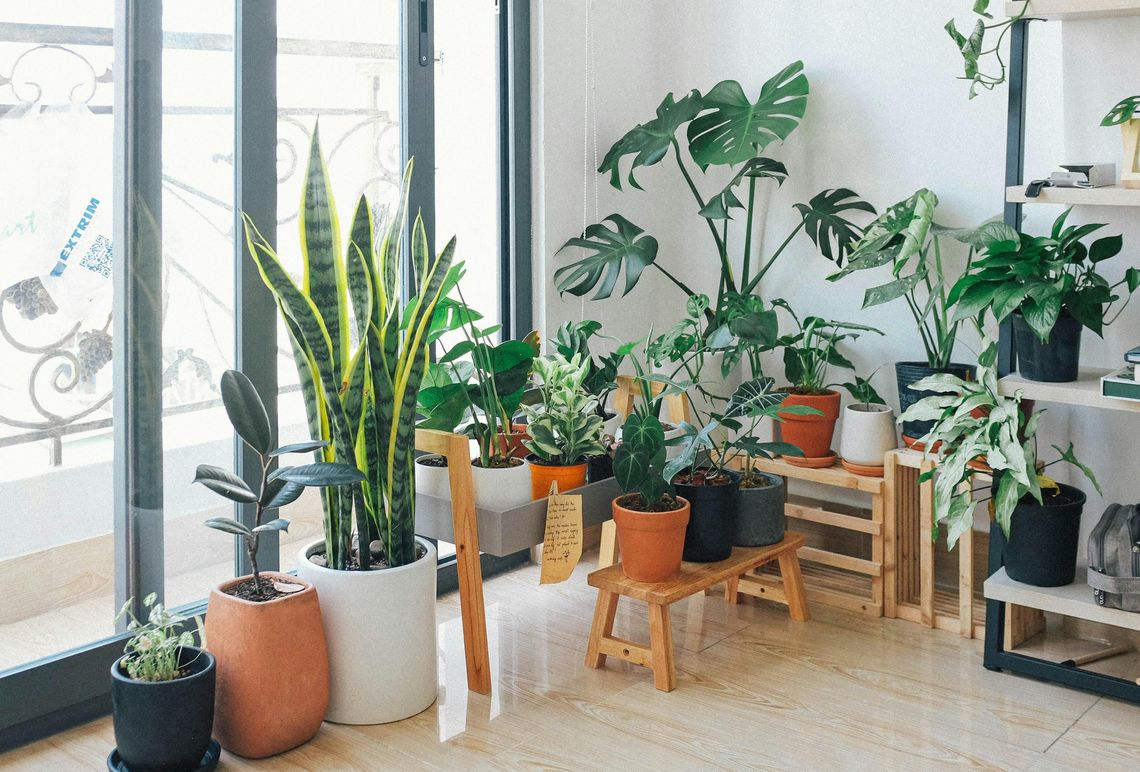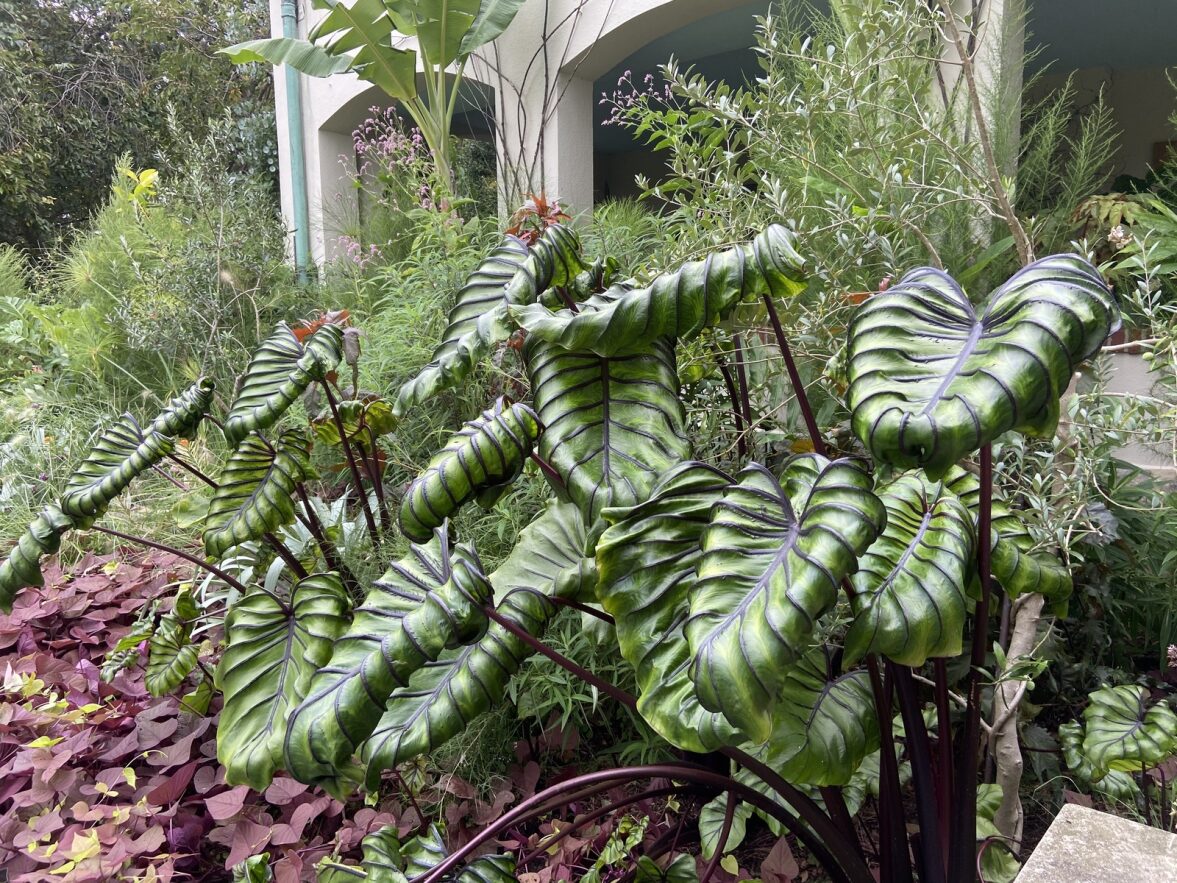 The Pennsylvania Horticultural Society recently shared a press release with their top 10 gardening trends for 2024. Despite living in Ohio I follow the PHS closely on social media because they are the fantastic organization behind the Philadelphia Flower Show, which I have been honored to attend in the past. It is am amazing experience and a great way to get a new gardening season off to a fantastic start. They are a national leader for the gardening community and typically have an eye for trends. According to PHS…
The Pennsylvania Horticultural Society recently shared a press release with their top 10 gardening trends for 2024. Despite living in Ohio I follow the PHS closely on social media because they are the fantastic organization behind the Philadelphia Flower Show, which I have been honored to attend in the past. It is am amazing experience and a great way to get a new gardening season off to a fantastic start. They are a national leader for the gardening community and typically have an eye for trends. According to PHS…
“These 2024 gardening trends are based on what we have seen by attending conferences, exhibitions, visiting countless personal and public gardens, and conversations with professionals. They are a fantastic way for gardeners to get inspired and get a feel for what professionals at the forefront of this industry are doing in their own gardens. Whether you are a beginner or a seasoned expert, these trends and plant selections can breathe new life into your space in an approachable way,” said PHS’s Vice President of Horticulture, Andrew Bunting.
You can read the full release here but I thought I’d share their trends for 2024 and give my own thoughts on each.
1) Considering the environment as you garden
This trend includes gardening practices that put the environment first. As part of PHS’s ethos of “Gardening for the Greater Good,” gardening can promote environmental stewardship. This includes movements such as “Leave the Leaves” in the fall help reduce landfill waste (which I love), using battery operated blowers and mowers instead of gas, creating habitats for overwintering insects, turning lawns into meadows, opting for peat-free planting mediums, and buying native plants. I do all of this and more in my own garden and have for years, so I am thrilled that I was way ahead of this trend. I’ve even been known to take the bags of leaves my neighbors collect to save them from the landfill!
2) Growing fruit at home
Growing fruit at home has gained popularity for both those with yard space and container space. I currently grow apples, pears, paw paws, figs, serviceberries, strawberries, blackberries, raspberries, blueberries, honeyberries, lemons, limes, and currants. I love all the options you have with limited space. I only have half an acre. PHS gave some specific options for those with limited space below…
PHS Recommends: For those with yard space, Asian persimmons like Diospyros kaki ‘Saijo,’ ‘Fuyu,’ or the native persimmons, Diospyros virginiana, and the native pawpaw, Asimina triloba have been gaining in popularity as alternatives to the more traditional pears, apples, and peaches. For gardeners who want to try container fruit gardening, new options include high producing, compact, ornamental, and self-pollinating plants for the home garden such as Bushel and Berry® blueberries, the Fignomenal® dwarf figs, and Sweet Kiss™ strawberries.
3) Decorating with houseplants
Houseplants continue to dominate as a source of décor while the term “plant parent” is now a common term! I’m not much on indoor plants unless they are seedlings that will eventually be taken outside but I do admire those who have thriving indoor collections!
PHS Recommends: Popular houseplants in 2024 include the easy to care mother-in-law’s-tongue, Sansevieria (syn. Dracaena) and the popular low-light loving, unique foliage aroids (Monstera, pothos, Anthurium, Epipremnum, Alocasia and Philodendron). The popular brand Proven Winners has introduced lifestyle house plant collections (Leaf Joy® Atrium™ Collection and Leaf Joy® Cocoon™ Collection) that take the guesswork out of figuring out ideal conditions for plants, offering easy-to-access information to ensure plants thrive.
4) Achieving ecological certifications
Several organizations recognize home gardens with ecological certifications. I myself have had two gardens certified as National Wildlife Federation Wildlife Habitats. It’s a fun way to ensure you are gardening with best practices for the planet and for wildlife and also be recognized for your small contribution. Most offer a cool plaque you can display to show your hard work and dedication.
Some other programs include:
Home Grown National Park
Monarch Watch Waystations Habitat Registration
Penn State Extension Service Pollinator Friendly Garden
5) Planting pollinator friendly gardens
Pollinator gardens provide habitat and food for native pollinating bees, wasps, moths, and butterflies, including the iconic monarch butterfly. I love that providing them with food and water sources and places to overwinter has become the trend. I hope it also becomes the norm. I know there used to be a big disconnect in my own garden when I rarely grew flowers, just food. Once I started growing flowers on a massive scale, everything just thrived.
PHS Recommends: Adding pollinator attracting plants such as Pycnanthemum, mountain mint; Eutrochium (syn. Eupatorium) Joe-pye weed; Liatris, gayfeathers; Echinacea, coneflowers and Asclepias, milkweeds will increase the diversity of garden pollinators.
6) Mitigating global climate change
By planting more heat and drought tolerant southern native species, gardeners can help counteract the impacts of changing weather patterns, including increases in periods of drought and much hotter summers. Strategically selecting species for drought tolerance, as well as adopting waterwise gardening practices, as well as utilizing gravel gardens, rain gardens, or swale gardens are tools that can be used to mitigate the impacts of climate change.
This just makes good sense too. No one wants a garden that is dependent on constant care and watering. Its expensive, time consuming, and no one likes a diva. Drought tolerant and native planting areas should be a huge focus.
PHS recommends: Options include Mexican dogwood, Cornus florida subsp. urbiniana. Other good choices for likely heat and drought tolerant genetics include Magnolia grandiflora, southern magnolia, the willow oak, Quercus phellos and the Florida anise, Illicium floridanum
7) Using substitutes for boxwoods
Boxwood blight is an ongoing fungal issue for many gardeners. I am also not a fan of the spider mites they attract. I have opted to get rid of my own boxwoods but if I do decide to add some in the future I will look into the resistant varieties they recommend.
PHS recommends: Some great substitutions include alternate evergreens such as inkberry holly, Ilex glabra Strongbox®, Gem Box® and Proven Winners®, and Squeeze Box®. Additionally, boxwoods that are bred to be resistant to blight are being promoted by Better Boxwood® such as Skylight™, Renaissance™, Heritage™, and Babylon Beauty™.
8) Planting more grasses and sedges
Still not a huge draw for me but I know they are VERY popular among many gardeners.
PHS recommends: Some top performing sedges include the Wood’s sedge, Carex woodii; Cherokee sedge, Carex cherokeenis; common brome sedge, Carex bromoides; white-tinge sedge, Carex albicans and the ever popular Pennsylvania sedge, Carex pensylvanica. Some new grasses from famed grass hybridizer Brent Horvath at Intrinsic Perennials include two selections of the little bluestem, Schizachyrium scoparium ‘Little Red’ and ‘Sandhill’ and the big bluestem, Andropogon gerardii ‘Blackhawks’ and ‘Holy Smoke.’
9) Growing Hydrangea mania
I adore hydrangeas and have 20 different varieties. My personal favorite is Hydrangea paniculata because they are more drought and heat tolerant and prefer full sun.
Plant Options: Growers are responding by introducing several new varieties that emphasize stunning color variations and the ability to find a hydrangea for any garden space. Bailey Nursery’s First Editions® Hydrangea macrophylla Eclipse® features stunning purple-black foliage and contrasting pink flowers. From Star® Roses and Plants, Hydrangea paniculata Sweet Starlight™ is a new compact selection that is perfect for the small garden or container.
10) Enjoying a taste of the tropics
Tropical plants are popular in the garden for their seasonal large and luxuriant foliage. This impact in the temperate garden creates a tropical-like feeling throughout the summer and into the fall, and offers up vibrant splashes of color, bringing a taste of the tropics home. I just started growing some tropicals myself this past year, elephant ears and cannas. They are currently overwintering in my basement.
Plant Options: There continues to be many great tropical plants coming to garden centers including two new elephant ears, Colocasia esculenta Redemption™ and Pharaoh’s Mask™ from Plants Nouveau®. There are a host of great new bold foliaged begonias with great leaf patterns including Jurassic rex begonias, Begonia rex Curly™ and the Shadow King® series. The Hollywood® Hibiscus, Sun Parasol® Mandevilla and Canna Cannova® Red Golden Flame and Bronze Peach are great new tropical plant introductions.
ABOUT PENNSYLVANIA HORTICULTURAL SOCIETY
The Pennsylvania Horticultural Society (PHS), an internationally recognized nonprofit organization founded in 1827, uses horticulture to advance the health and well-being of the Greater Philadelphia Region. PHS programs create healthier living environments, increase access to fresh food, expand access to jobs and economic opportunity, and strengthen deeper social connections between people. PHS’s work spans 250 neighborhoods; an expansive network of public gardens and landscapes; year-round learning experiences; and the nation’s signature gardening event, the Philadelphia Flower Show. PHS provides everyone with opportunities to garden for the greater good as a participant, member, donor, or volunteer. For information and to support this impactful work, please visit PHSonline.org.





